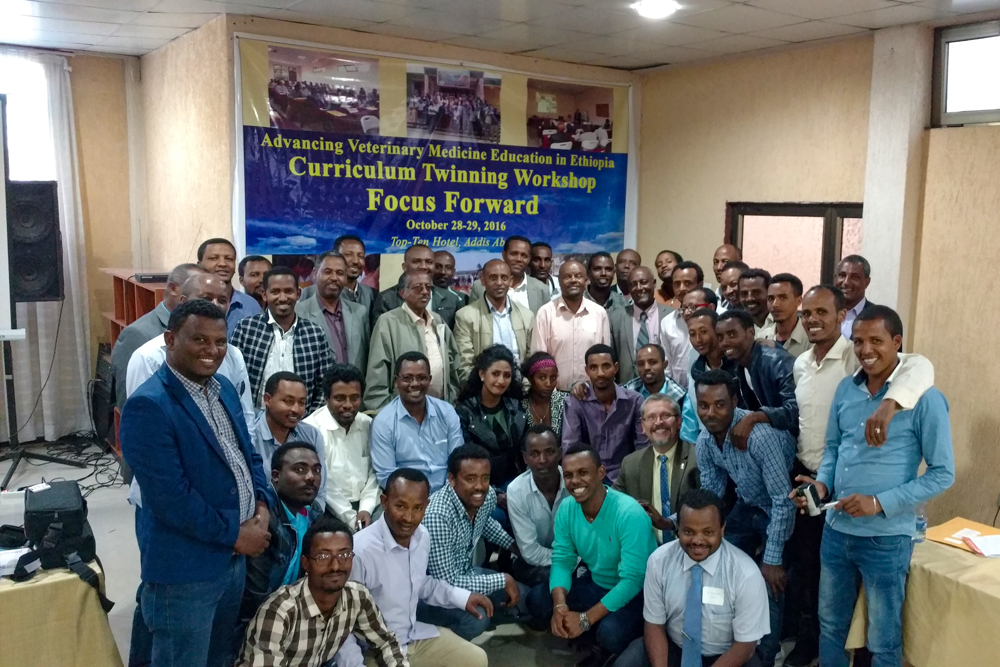
Disease that can quickly spread across continents due to current trade and travel abilities have made early detection and diagnosis of major pathogens ever so important. Any major disease that threatens one country is a danger to the global community, and only early detection and rapid treatments can control and contain the threat.
As a result, those being trained in the human and animal health sectors should be learning from similar curriculums that will train physicians and veterinarians to be proficient starting on day one after completing their education.
To improve education and training, the Global One Health initiative partnered with the College of Veterinary Medicine to develop the Curriculum Twinning Program, a three-year project in which faculty from Ohio State and the University of Gondar in Ethiopia identified curricular targets and outlined methods for enhancing institutional capacity and expertise in veterinary medicine in Ethiopia.
Redeveloping and improving the core veterinary medicine curriculum at the University of Gondar in Ethiopia was the goal of the Ohio State College of Veterinary Medicine. Faculty from both institutions established a project that follows the guidelines provided by the World Organisation for Animal Health (OIE) through its Veterinary Education Twinning Program. The program provides curriculum assessment, development and evaluation, as well as faculty development for enhancing the capacity and proficiency of veterinarians in Ethiopia.
For example, a veterinary education curriculum should address not only traditional clinical medicine and diagnostics but also preventive measures, risk analysis, epidemiology, zoonotic diseases, international trade and regulations, among others. A thorough understanding of these subject areas will ensure that a new veterinarian is better prepared at the time of graduation to be able to support their nation’s veterinary services. Consequently, local veterinary education programs must train their students in a manner that is not only compatible with the local needs but also with the national and global communities.
Like many countries in Africa, the Ethiopian economy relies heavily on agriculture and livestock production. With the largest livestock population in sub-Saharan Africa – primarily maintained by the pastoralist community and small farmholders – veterinary services supporting such communities are uniquely tied to the financial stability of the region. Past efforts to increase the stability and income of these communities have focused mostly on investment, market access, and general educational development. Little attention has been paid to the enhancement of education to support the country’s veterinary services that oversee the nation’s animal health needs.
Based on the University of Gondar’s needs and priorities, new and updated courses, educational materials, and diverse teaching tools were generated to provide the fundamental education and skills that new graduates require to provide quality veterinary services.
The University of Gondar is one of 10 veterinary colleges in Ethiopia, many of which have been established in the last 10 years. The growth in veterinary schools was an opportunity to maximize the impact of this twinning project to enable the University of Gondar to serve as a model and mentor to other veterinary colleges in Ethiopia that are establishing, revising or expanding their curriculum. Ohio State hopes that graduates who received training under the enhanced curriculum will become faculty members at other institutions and be able to share their knowledge and expertise with future veterinarians in Ethiopia.
The project was led by Professor Armando Hoet, DVM, PhD, Diplomate ACVPM. Below are the current findings and analyses: